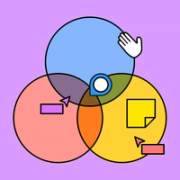
Whether you’re signing a new client or revisiting an old partnership, set the terms for the next chapter with FigJam templates.

Customize your customer service on this free interactive template.
Set a service standard that works for you and your customers—and enjoy lasting collaboration.
Perfect your customer service: Clearly communicate the level of service you provide with a service agreement to build trust and establish expectations.
Smooth out procedures: Remove the friction in routine processes when you define procedures and steps of service to enhance response time, customer support, and expectation.
Create a reference document: Keep every previous internal service level agreement on file to establish credibility with potential customers.


When everyone’s at the drawing board, you can draft an SLA that gels with the whole team. Lay out the terms, key performance indicators, and customer expectations in our shared workspaces and continually refine them with the help of Community-built widgets like Simple Vote and Lil Notes. Then, easily brand your document with shapes, drag and drop functionality, and integrated designs from Figma. The joy of collaboration? That’s something we can all agree on.
Get down to business with our SLA template. Then, throw some pizzaz into your project with all the planning templates you need.

Start your project on the right foot and cover all the important topics.

Pitch your service to customers with a visually captivating slide deck.

Learn more about your team and your customers with our interactive templates.
A service level agreement (SLA) clarifies expectations between the service provider and customer. An SLA example can include a description of the service, points of contact, and compensation or penalties.
An SLA template also commonly contains a section for service level agreement metrics. These are objective measures determined by both parties to measure the service's success. No service level agreement sample is complete without this quantitative baseline.
SLAs improve communication between the two parties—the service provider and the prospective customer—to minimize potential confusion. The service level agreement format also focuses on the customers’ needs rather than on the product itself, which can help build lasting relationships based on mutual trust.
Start with our SLA (service level agreement) example to ensure you include all the important sections. And remember that communication is vital when it comes to these documents. For example, be sure to:
- Clearly define the scope of the service
- Create a process for reporting issues
- Ensure mutual understanding of performance metrics
- Agree on remedies and penalties
Additionally, use an easily editable service level agreement (SLA) example and leave room for tweaks. As you implement your service, your customer will likely discover additional needs, or you may update and improve certain features. With an agreement that’s easy to revise, you can maintain a smooth, collaborative relationship.